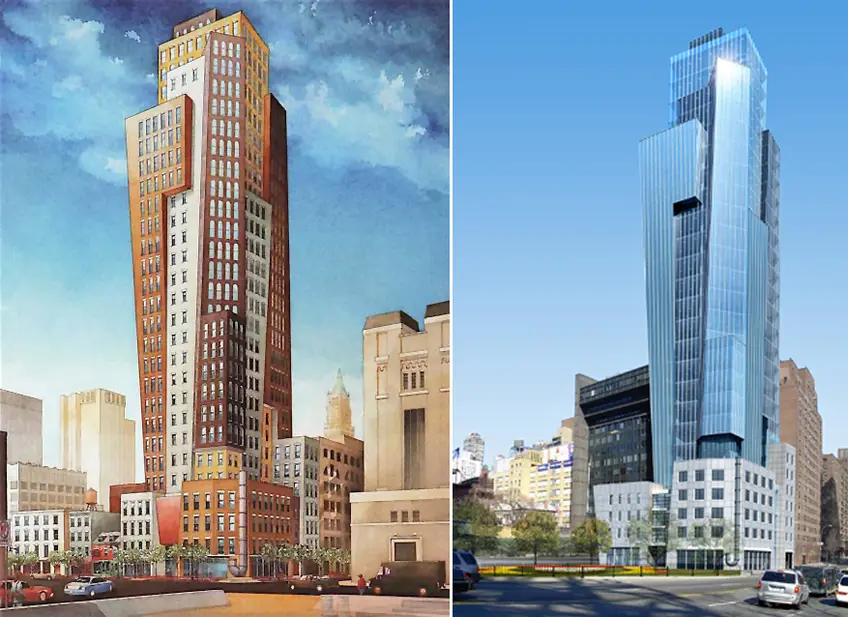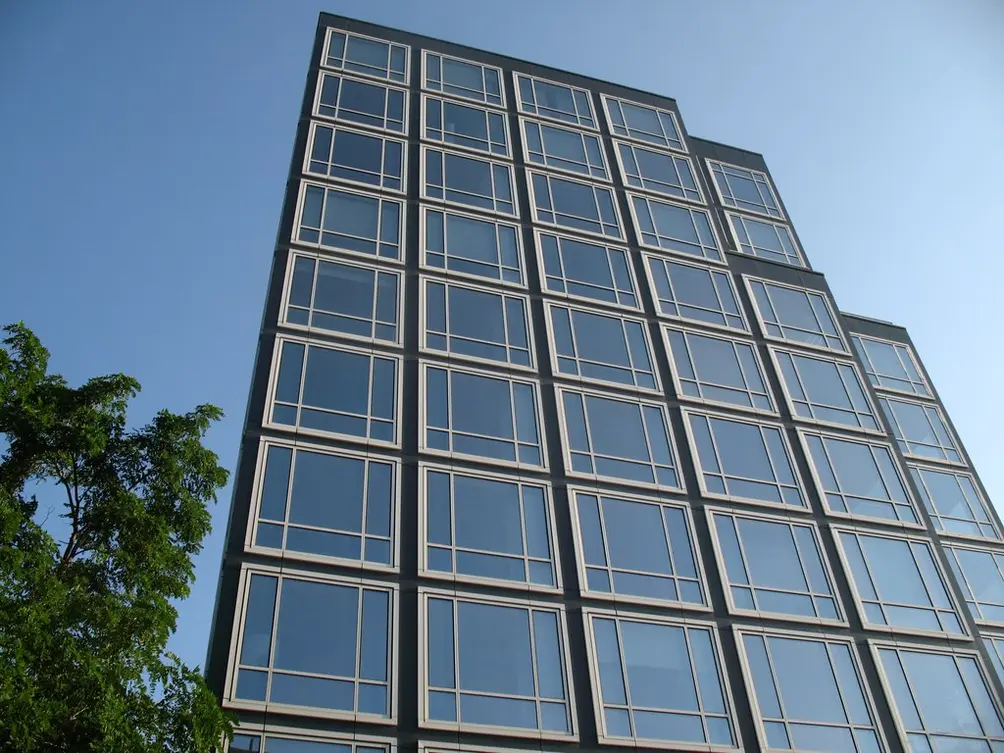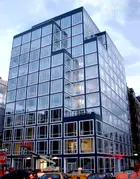 L: Watercolor rendering by Sven Johnson, R: A glassier design for the corner of East 62nd and York Avenue (The Vendome Group)
L: Watercolor rendering by Sven Johnson, R: A glassier design for the corner of East 62nd and York Avenue (The Vendome Group)
As many designers are well aware of, often the most interesting proposals never make it off the drawing board. One of New York's most lamentable coulda-woulda-shoulda schemes is the late Philip Johnson and Antonio Vendome's collaborative concept known as the "Habitable Sculpture." Though we assumed the 26-floor proposal was permanently shelved (despite fleeting hopes from the developer), last fall word came from Real Estate Weekly that Mr. Vendome is finally zeroing in on a site to build the envelope-pushing, postmodern tower.
Mr. Vendome tells REW, "My goal is to construct the Habitable Sculpture on a site that will give it the recognition it deserves, both domestically and internationally. This new paradigm will, for the first time and in a single transaction, allow for the simultaneous investment in art and real estate with Philip Johnson being the first architect to have a structure formally recognized as sculpture and he, the architect, recognized as an artist.”
Mr. Vendome tells REW, "My goal is to construct the Habitable Sculpture on a site that will give it the recognition it deserves, both domestically and internationally. This new paradigm will, for the first time and in a single transaction, allow for the simultaneous investment in art and real estate with Philip Johnson being the first architect to have a structure formally recognized as sculpture and he, the architect, recognized as an artist.”
To recap, in spring 2000, Mr. Vendome requested proposals from New York architects to design "something different and beautiful" for his West SoHo lot at 328 Spring Street. The selected design from Philip Johnson and Alan Ritchie Architects called for a faceted cubist form that interpreted the twisted steel of John Chamberlain's crushed automobile constructions. Vendome says, "Johnson created a new concept in architecture in which a building is first conceived as a work of sculpture and then divided into units."
In this article:
"Johnson created a new concept in architecture in which a building is first conceived as a work of sculpture and then divided into units." - Antonio Vendome
Former New York Times architecture critic Herbert Muschamp touted the design as "Turning contextualism on its head." He goes on to say, "Johnson deploys the cornices and rows of uniform, period-style windows as a sign of normalcy that is subverted by the fragmented facades. You almost want to see lines of laundry looped along the upper stories."
Though Philip Johnson, the first-ever Pritzker Prize winner, passed away in 2005, Mr. Vendome hoped that the project would be viewed as the crowning achievement of Johnson's long and varied career. Vendome sought to build variations of the design on 10 different sites worldwide, each reflecting the cultural and architectural heritage of its location while always retaining the underlying concept. The original New York concept called for a 348-foot-tall tower that would accommodate 50 apartments across 26 floors. In renderings, its faceted volumes would have been punctured with double-hung windows and clad in brick whose colors were drawn from the neighborhood.
 Urban Glass House (Ondel/CityRealty)
Urban Glass House (Ondel/CityRealty)
Ultimately the tower was KO'd by the local community who deemed the tower too tall. Both Vendome and Johnson refused to lower the height of the structure saying it would alter the sculptural concept. The site was eventually rezoned to residential to allow the shorter, unremarkable condo "Urban Glass House." While glassy and stumpy, homes in the building sell at a premium. Its sole availability for purchase is a fourth-floor two-bed with an ask of
$2.395M. There are also a pair of two-bedrooms for rent priced at $9,250/mo and $14,000/mo.
Soon after the loss, The Vendome Group stated they remain intent on building the original design elsewhere in New York or in another city. And in October, he told Broker’s Weekly. "I am embarking on a plan to bring my vision and Philip Johnson's iconic design to fruition." We can't wait.
Soon after the loss, The Vendome Group stated they remain intent on building the original design elsewhere in New York or in another city. And in October, he told Broker’s Weekly. "I am embarking on a plan to bring my vision and Philip Johnson's iconic design to fruition." We can't wait.
Would you like to tour any of these properties?

New Developments Editor
Ondel Hylton
Ondel is a lifelong New Yorker and comprehensive assessor of the city's dynamic urban landscape.


 6sqft delivers the latest on real estate, architecture, and design, straight from New York City.
6sqft delivers the latest on real estate, architecture, and design, straight from New York City.
